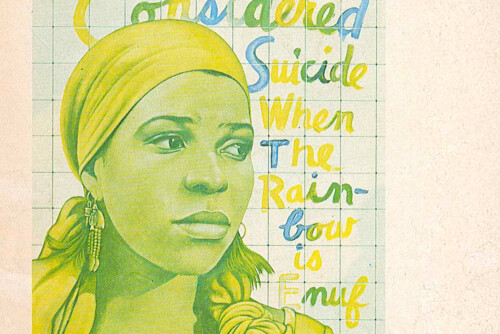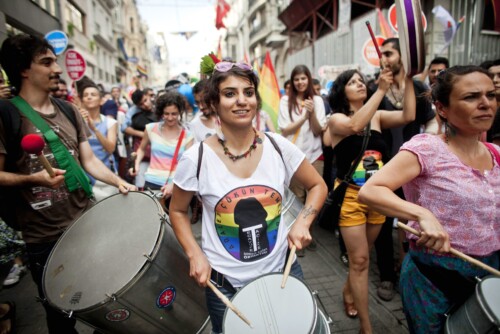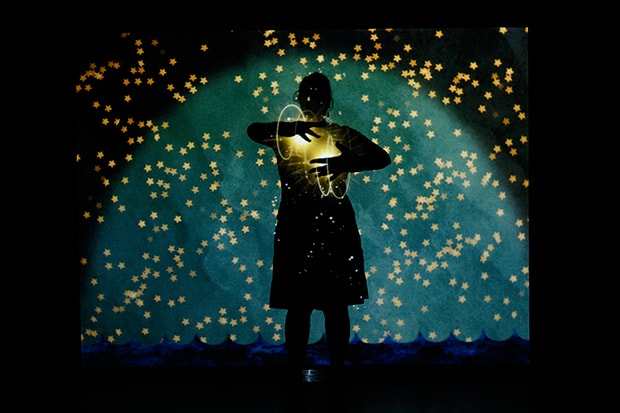This is a healing storytelling experience, and I believe that all of the characters will heal the wounds that all women have endured.
—Rasheedah H. Muhammad, actor portaying lady in green in for colored girls, Daemon CollegeHas the Black vagina received the respect she deserves?
—Kimberlè Crenshaw, “the Black Vagina”, a V-Day poem, Apollo Theatre, 2007
Reviewing Boston College’s 2014 production of for colored girls who have considered suicide / when the rainbow was enuf, student reporter Thais Menendez writes: “As an advocate of playwrights of color at Boston College, I was elated to witness a moment in history: the first all-black cast in a production at Boston College.”1 “A well-rounded education,” she continues, “involves access to cultural diversity as more than a one-time required course in the curriculum.”2 In her comment, Menendez explicitly connects the performance on stage to the racial climate on campus, and not merely as a means to compare what happens on stage to what happens in the classroom. Rather, her claim assumes that the pedagogical work of the college extends beyond the spaces institutionally marked as places of teaching and learning; theater, in her framework, has the capacity to challenge norms beyond what is possible within artificially cordoned-off “one-time required courses in the curriculum.” The production team’s choices created visibility around race and gender within the academically imbued—yet academically liminal—space of college theater. The activism inherent in those choices reached beyond an individual production or academic institution.
Menendez’s insights provide a useful springboard for thinking about the far-reaching activist capacity of theater on college campuses for production teams, actors, and audience members. Menendez’s review of this one production can be expanded into the larger concerns of college theater and student activism, two threads of college life that often intersect. She frames the significance of for colored girls through the politicized lens of aesthetics, and she recognizes the politics embedded in the production’s aesthetic relative to Boston College’s overall (political) climate. Performance represents the integration of often-separated spheres: academic and nonacademic, intellectual and emotional, entertainment and social justice.
Performance is, then, an ideal lens through which to explore questions about these fraught intersections. “Embodiment” in theatre has activist implications; that is, the choice of which bodies to perform within the context of a script’s message can serve as a potent form of activism that complicates notions of “inclusion” and highlights issues of cultural discourse, dominance, race, and feminism.
College performance can function as a uniquely potent site of feminist activism on college campuses. Along with for colored girls, Eve Ensler’s Vagina Monologues is perhaps the most visible and consistent feminist college theater offering in the United States. Although the plays share few qualities in terms of characters, narrative, style, or authorial oversight of current productions, these plays constitute two of the most popular feminist college productions in the United States. Juxtaposing for colored girls with Vagina Monologues, in particular, the 2014 Columbia University production with its women-of-color cast, provides a rich terrain for investigating how these plays provide ideologically specific scaffolding for student production teams, which they can choose to work with or against in their productions, and for considering how we read the implications of those choices within the rhetorics of inclusion, universalism, and feminism.
In 2012-2013, Barnard College brought Ntzoke Shange to campus. Faculty interested in Shange’s work spent a year thinking about her writing through a funded seminar, and her visit culminated in a daylong conference and a student production. I have my own particular relationship to for colored girls. I teach for colored girls in my spring course, “Black Theatre,” and I am always struck by how many students choose that play as the subject for a final creative project. In one particularly memorable iteration, four women adapted the script to express their experiences as young, successful African-American women living in America today; they changed the rainbow colors of the characters and created new text, while keeping intact the play’s choreopoem structure—which the students deemed feminist—so that they might “use” the play’s core as a medium specific to their expression of identity. Students in general find relevance and flexibility in the script. Unlike many other plays we read, for colored girls does not ask for character development within a vacuum; it demands that the actress relay her experience of being a woman (according to Shange, her original intention was for the play to express the experiences of women of color) through the characters Shange creates.3 Thus, the form and structure of the script indexes its radical expression and functions in an activist capacity, inviting cathexis (prolonged engagement) from its audience and actors, rather than catharsis (emotional release).
From the title alone, one recognizes that for colored girls constructs an activist platform that brings attention to the identity of “colored girls.” Thus, any examination of the play as an activist medium must look at the intersectionality of race (“colored”) and gender (“girls”) and how that is expressed through the production-specific translation of the script into live performance. Shange’s script, while performed on college campuses all across the country, does not rely on a centralized hub for promotion, distribution, and content control (such as the Vagina Monologues V-Day website). Instead, for colored girls must rely on college and local newspapers to serve as the only (decentralized) archival record of college performances’ production values and audience responses. For the purposes of this study, I rely on those sources for a sense of how production teams staged the script to performance and how the production was received.
As a case in point, we can consider the advertisement on the Santa Clara University Theatre’s website announcing their 2013 production of for colored girls, in which they declare: “The play is a must-see social commentary on what it’s like to be a black woman in the modern world.”4 In this single sentence, the play’s director attempts to construct this production’s own contextual universe; while the ad’s text may appear general, the writer still makes choices as to what to emphasize and what to ignore. Those choices have critical implications both explicitly (how someone actively interprets the words) and more subtly (in terms of the environment created around the production that might not be actively ascribed to a single source). Even the choice of how to word a simple advertisement for the show, then, has critical value when considering the play within an activist context. While “must-see” is a common trope in popular entertainment, in this case it is in direct relationship to “what it’s like to be a black woman in the modern world.” This production thus makes three claims in its call for an audience: 1) there is an imperative for audience members to understand the perspective of black women (and by extension, that a black woman’s experiences carry cultural value); 2) the experience of black women is a commentary on the larger social world; and 3) the production reflects the lives of “modern” black women, thus extricating the performance text from its original 1970s context.
The opening of the article advertising the play at SCU further contextualizes the play as activist in what it asks from its audience, by politicizing the play’s narrative structure: “The SCU theatre department has a history of pushing the limits with the shows they choose. We vary from the better-known choices such as Shakespeare and The Crucible. Our theatre department knows that they can push boundaries, challenge people’s thinking, and give audiences new perspective [sic].” “Push[ing] boundaries”—translated to challenging people’s thinking—means explicitly avoiding “the better-known choices,” thus framing traditional narrative productions (white-male-authored with an assumed white cast) as supporting the status quo by not challenging thinking. This article, beyond advertising the production, constructs a critical framework, foregrounds the importance of the producers’ choice to stage this script and offers a lens for understanding the significance of the script itself.
Similarly, Boston College’s previously mentioned production emphasized the broader sociocultural significance of the play and, at the same time, assumed that the play would have personal relevance to the African-American actors playing Shange’s characters. The theatre department described the play as expressing “the many struggles and obstacles that African-American women face throughout their lives.” In the audition materials, the director called for “seven African-American women” and asked that those women be willing to engage personally in the struggles of the characters: “The company will explore their own personal response to Shange’s characters. From this work they will create a performance that is full of personal feeling while expressing the communal goals of these Black women.”5 Whether “these Black women” reflects the cast or the characters is left unclear; what is clear is that through their work the cast is asked to create a communal presence that reflects the community Shange creates on the page and invests it with political significance. The supplemental flexibility of both the script and the author are elastic enough to heighten the ways that transferences are made by the performer to the text, in order to express the performer’s own political experiences. Consequently, the audience members—as assumed proxies for the performers—are also expected to make that transference. For example, an actor from Daemon College’s production expressed her connection to “the experiences the characters endured” (Lady in Red: Yolanda Stewart-Jones), and another actor connected the performance to the impact on the audience: “I pray that everyone who sees this play will understand the struggles African-American women have gone through.”6 Note, the actor does not ask for the audience to understand the struggles of the African-American characters, or to understand the struggles of a biographical corollary to specific African-American women; rather, she calls for the characters to stand in for a more generalized experience of race and gender in America.
Boston College’s production of for colored girls with the College’s first all-black cast (according to Menendez) occurred at the same moment that Columbia University students staged their yearly production of The Vagina Monologues with an all women-of-color cast for the first time.7 Unlike the muted response to Boston College’s production, The Vagina Monologue’s casting choices thrust the production into the political limelight at both the local and national level. And while The Vagina Monologues website describes the play and V-day project as antiracist, the response to the 2014 Columbia production team’s choice to fully cast the show with women of color—both the furor from the conservative media and the resistance from Ensler’s organization—destabilizes that claim and provides an opportunity to more closely examine how the bodies on stage are always already politicized texts with implications separate from but tracing back to the play script. In this way, Columbia University’s women-of-color Vagina Monologues is particularly significant when explored next to college productions of for colored girls. Reading these productions through the lens of activism, more specifically, feminist activism, even more specifically antiracist, feminist activism calls into question how elements of performance qua activism are gendered and raced and how notions of inclusion become complicated in light of these elements.
- According to Boston College’s website, accessed in 2014, 32% of students identify as African-American, Hispanic, Asian, or Native American. See www.bc.edu/about/bc-facts.html [↩]
- Thais Menendez, “Requiem for a Rainbow: A Resplendent Production of ‘for colored girls,’” Rock@BC 24 Mar. 2014. Available at http://www.therockatbc.com/2014/03/24/requiem-for-a-rainbow-a-resplendent-production-of-for-colored-girls [↩]
- Ntozake Shange, “Ntozake Shange Conversation with ENGL3993,” The Worlds of Ntozake Shange Class Visit, II. United States, New York. 18 Apr. 2014. [↩]
- See http://www.hercampus.com/school/scu/scu-presents-colored-girls-who-have-considered-suicidewhen-rainbow-enuf. [↩]
- See http://www.bc.edu/offices/pubaf/news/2014-mar-apr/-bc-theatre-department-presents–for-colored-girls-who-have-cons.html. [↩]
- See http://www.daemen.edu/studentlife/insight/Pages/ForColoredGirlsWhoHaveConsideredSuicideWhentheRainbowisEnuff.aspx. Accessed April 10, 2015. [↩]
- University of Michigan also called for a women-of-color cast for their 2005 auditions in preparation for a 2006 performance. Ensler’s organization, according to the Michigan Daily, “threatened to pull the script—in turn ending the funds that would be distributed at area women’s shelters—unless white women were also allowed to be a part of the production.” (Michigan Daily, Jan. 17, 2006. http://www.michigandaily.com/content/vagina-monologues-light-power-center). In response, the producers opened the auditions and casting to white women. [↩]




